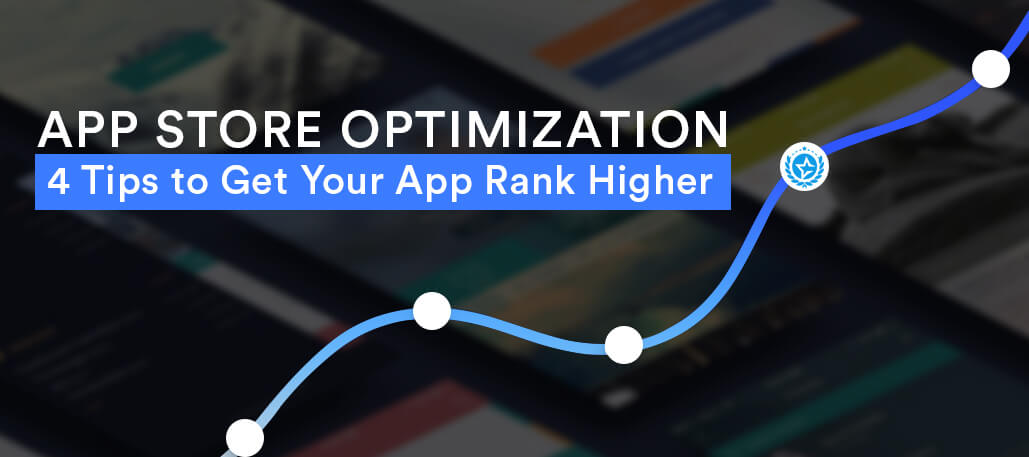
App Store Optimization – 4 Tips to Get Your App Rank Higher
Why are you building a mobile app for your business? To serve the people? To create convenience? NO.
The absolute reason behind developing a mobile app today is to create a brand identity among millennials, among the major audience worldwide. All other reasons are secondary yet important ones; well customer convenience and customer satisfaction are significant for higher conversions.
You may have created an outstanding app with the help of an expert mobile app development company. The app is working well with clean code, rich interfaces and seamless UX, but have you reached that expected mark of app downloads?
If yes, that’s awesome. If not, then why not? Ever inquired?
The simple and straight answer is because you have never thought of optimizing your app. I doubt if you’ve ever heard about app optimization. If not, it’s cool. Because most of us have really not brainstormed a phenomenon like App Store Optimization (ASO).
To your knowledge, this is in the mainstream among top app owners and they’ve already started to work on optimizing their mobile apps on the app stores- be it Google Play or Apple’s App Store.
To learn the ropes to stay in the race, we’re here with the best tips you need for app store optimization.
What is App Store Optimization?
So, what’s it we have been discussing all this time. Literally, app store optimization is ‘the process of improving visibility of a mobile app in an app store.’
Familiar? Any similarity with SEO? Yes, it’s just like search engine optimization but limited to mobile apps and app stores.
Like seriously, with over 2.8 million apps on Google Play and 2.2 million apps on Apple app store, experts need to have a way where they could rank these apps based on their quality, most downloaded, trending, most liked and many more factors. Clearly, the higher your app ranks, the more visible it is to potential customers. Consequently, increased visibility lead to more traffic, more downloads.
Sadly, like SEO, ASO has been overlooked my many app owners who know the term. But we all know how powerful the search engine is for all the businesses running online or offline. No sector is saved from the incursion of search engine optimization. Similarly, we have ASO.
Now that ASO makes sense to you, let’s learn the steps you should take further to take your app to the top ranking on the app stores.
Work on the Keywords
You will come across a reference to SEO multiple times in this article because ASO shares the common traits. Now exactly like everything in SEO, keywords are the foundation for app optimization. Starting from the title to the description, you should keep a balance between word relevancy and competition. Use longer-tail keywords to rank higher. But don’t forget to keep the text relevant.
Apple app store has recently updated its guidelines and cut short the character count from 255 to 50 characters for the app’s URL. So, you have to limit the keywords and choose your titles wisely. Be well-versed with the app store guidelines before the final launch else you will be abandoned.
Both Google and Apple suggest giving a specific title to the app, specific to what is the core functionality with a mix of keywords.
First few screenshots should be most compelling
You can think of it like an opening paragraph of any article. You continue to the next only if the first engages you. The opening words have to immediately catch reader’s attention and so is the screenshots that you display to the audience on the app store.
They are the first impressions and pitch your story, so they should be clear (use high-resolution), sensible and deliver a value proposition while explaining what the app is all about and how it is going to convert a societal need.
In-app reviews and ratings
People today don’t even buy a kitchen utility without taking review from their friends or checking reviews on Amazon, eBay. For everything and anything, they need to know what’s the feedback. Same goes with the app in the app stores. Simply put, apps with high rating and positive reviews rank higher.
Though it is not much in app owner’s control, still if you deliver a delightful experience and gratify the other user-centric demands and app store guidelines, you can inspire users to submit their reviews.
Encourage as many users to provide in-app reviews and rating. Even if you get a negative comment, in-app review feature allows you to work on it without showing the comments online.
Local versions of app
Launch your app in various local languages, catering to the users of a specific region. If your app uses the GPS feature, localize the screenshots and the language to that business area. This helps in building connectivity with users and provide them personalized customer experience. Apps that translate to local content perform better.
Did you know “53% of Android users and 47% of iOS users found their last app through app store searching (Google Play and App Store, respectively), and apps with appealing screenshots increased downloads by 30% over ones with just words.”
So, providing a high-quality digital experience with a check on keywords, rating and reviews and impressive screenshots is essential to the success of your app in the app stores.
